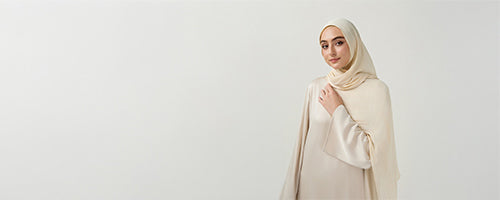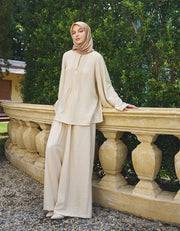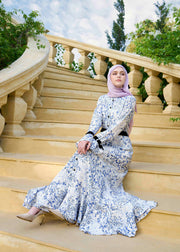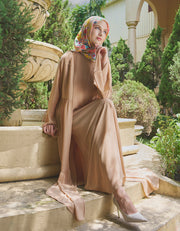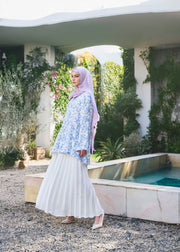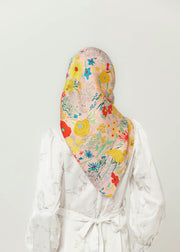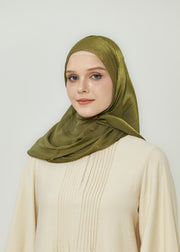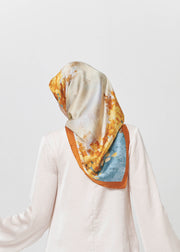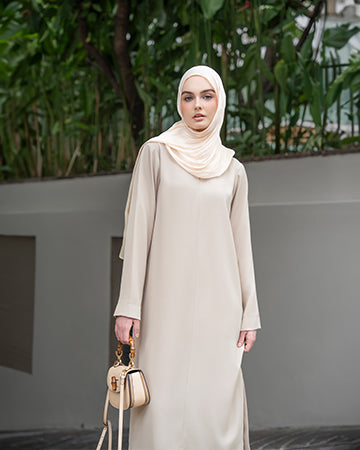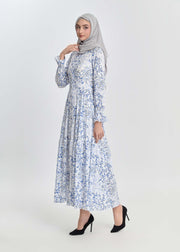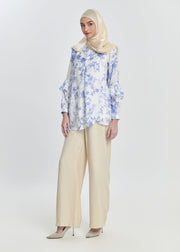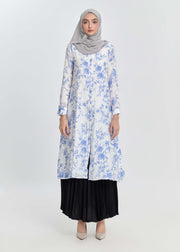Abaya Kimono vs. Traditional Abaya: What's the Difference?
In the ever-evolving world of modest fashion, one question continues to spark interest: abaya kimono vs traditional abaya — what’s the real difference? While both garments hold cultural and religious significance, their styles, origins, and functionalities differ in meaningful ways. Whether you're new to modest wear or refining your personal wardrobe, understanding the contrast between these two styles will help you make more informed fashion choices.
The Roots: Abaya Kimono vs Traditional Abaya Origins
Let’s begin with a look at where these garments come from.
The traditional abaya has deep roots in Islamic culture, particularly in the Middle East. It is typically a long, loose-fitting robe designed to cover the body modestly. Most often, it comes in dark colors, especially black, and is worn over everyday clothing.
The abaya kimono, by contrast, is a more recent innovation. It blends the structure of the Japanese kimono with the modesty of the abaya, offering a contemporary take that appeals to fashion-forward women. While it retains the long and flowing nature of the abaya, it often features open fronts, wide sleeves, belts, and varied fabrics.
The Roots: Abaya Kimono vs Traditional Abaya Origins
Style Differences: Abaya Kimono vs Traditional Abaya
One of the most striking aspects in the abaya kimono vs traditional abaya comparison lies in their stylistic approach.
Traditional Abaya:
-
Loose and flowy with minimal structure.
-
Usually black or dark in color.
-
Rarely features embellishments beyond basic embroidery.
-
Closed front with a round or V neckline.
Traditional Abaya
Abaya Kimono:
-
Structured yet flowy, often with a belt.
-
Available in a wide range of colors and patterns.
-
Open-front design, often worn like a long cardigan.
-
Inspired by East Asian fashion silhouettes.
Abaya Kimono
If you’re someone who enjoys minimalism and tradition, the traditional abaya may suit you best. But if you prefer layering and experimenting with fashion trends, the abaya kimono offers more creative possibilities.
Fabric and Texture: A Key Differentiator
Another major point in the abaya kimono vs traditional abaya debate is the variety of materials used.
Traditional abayas are often made from crepe, nidha, or polyester blends. These fabrics are durable, opaque, and designed for everyday wear, particularly in hot climates where breathability is crucial.
Abaya kimonos, however, are made from a broader selection of materials, including:
-
Chiffon: for a lightweight, elegant feel.
-
Satin and silk: for formal and luxurious occasions.
-
Linen: ideal for casual and travel wear.
-
Lace or mesh overlays: for feminine and festive designs
This wider fabric range allows abaya kimonos to be styled for diverse occasions—from casual coffee dates to evening galas.
Functionality: Which One Fits Your Lifestyle?
When comparing abaya kimono vs traditional abaya, it’s important to consider how each garment functions in daily life.
Traditional Abaya:
-
Practical for prayer, work, or day-to-day errands.
-
Low maintenance and easy to slip on quickly.
-
Simple silhouettes make it universally appropriate.
Abaya Kimono:
-
Versatile and suitable for layering over jeans, dresses, or even swimwear.
-
Ideal for travel, fashion events, or casual chic outings.
-
May require more effort in styling (belt, layers, etc.).
For women who prioritize ease and modesty above all else, traditional abayas are a go-to. However, if you're seeking fashion-forward pieces that still align with your values, the abaya kimono may become your favorite wardrobe staple.
Abaya Kimono vs Traditional Abaya: Styling Possibilities
Styling is where the abaya kimono vs traditional abaya conversation gets even more interesting.
Styling a Traditional Abaya:
-
Often paired with neutral or monochrome hijabs.
-
Minimal accessories (think simple studs or bracelets).
-
Modest shoes like flats or mules complete the look.
Styling an Abaya Kimono:
-
Can be worn over denim or dresses.
-
Pairs well with printed or textured hijabs.
-
Accessories like belts, layered necklaces, or statement bags can enhance the outfit.
The abaya kimono invites creativity in a way the traditional abaya typically doesn't. It bridges cultural modesty with modern flair.
Cultural Acceptance and Evolution
Understanding the cultural context of the abaya kimono vs traditional abaya is also essential.
Traditional abayas are seen as symbols of Islamic identity and cultural pride, especially in Gulf countries. They are deeply respected and carry religious connotations.
Abaya kimonos, while still modest, are more widely accepted in international modest fashion circles. They're often worn by Muslim women living in Western countries, as well as non-Muslim women who admire modest style for its elegance and comfort.
In essence, abaya kimonos reflect the globalization of fashion—they honor tradition while embracing modernity.
Cultural Acceptance and Evolution
Which One Should You Choose?
Ultimately, the choice between abaya kimono vs traditional abaya depends on your personal style, lifestyle, and fashion goals. Ask yourself:
-
Do I want something simple and universally modest? → Go for the traditional abaya.
-
Am I interested in modest fashion with a trendy edge? → Try the abaya kimono.
-
Do I need variety in colors and prints? → Abaya kimonos are more flexible.
-
Is religious formality a top priority for me? → Traditional abayas are the safer bet.
For most women, owning both types offers the most flexibility—traditional abayas for religious or formal occasions, and abaya kimonos for everyday chic.
Abaya Kimono vs Traditional Abaya: Final Thoughts
The world of modest fashion continues to grow, and the abaya kimono vs traditional abaya debate is proof of that evolution. While both garments uphold the values of modesty, they offer different ways for women to express themselves. The traditional abaya honors time-tested elegance, while the abaya kimono celebrates individuality and innovation.
You don’t have to choose one over the other. Embrace both. Let your wardrobe reflect who you are—on every occasion, in every season.
Discover Your Perfect Abaya at Minnaba
At Minnaba, we celebrate the richness of modest fashion by offering both traditional abayas and elegant abaya kimonos. Whether you’re drawn to classic silhouettes or contemporary designs, you’ll find high-quality pieces crafted for the modern woman who values both faith and fashion.
Explore Minnaba's collection now and redefine your modest wardrobe.

